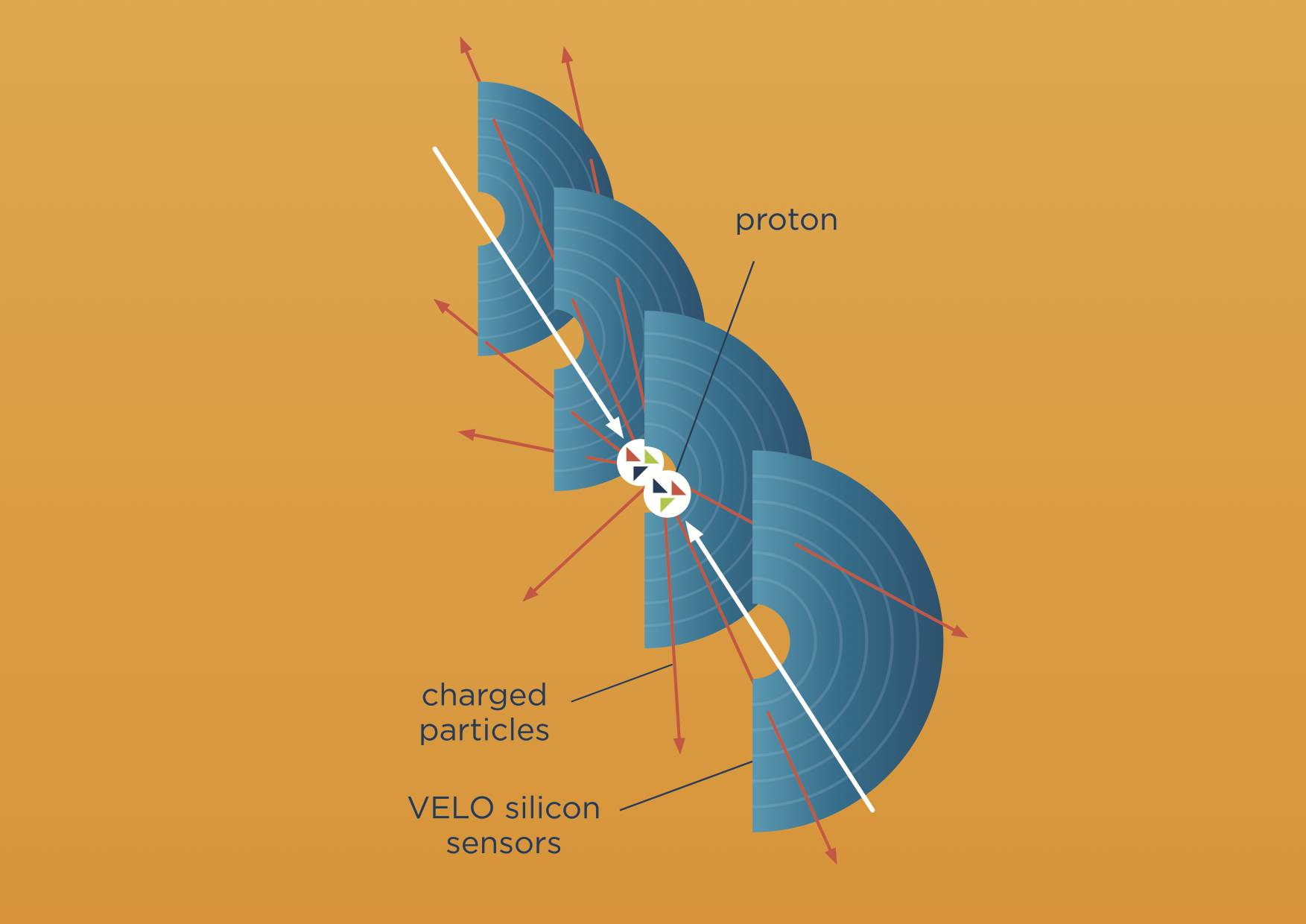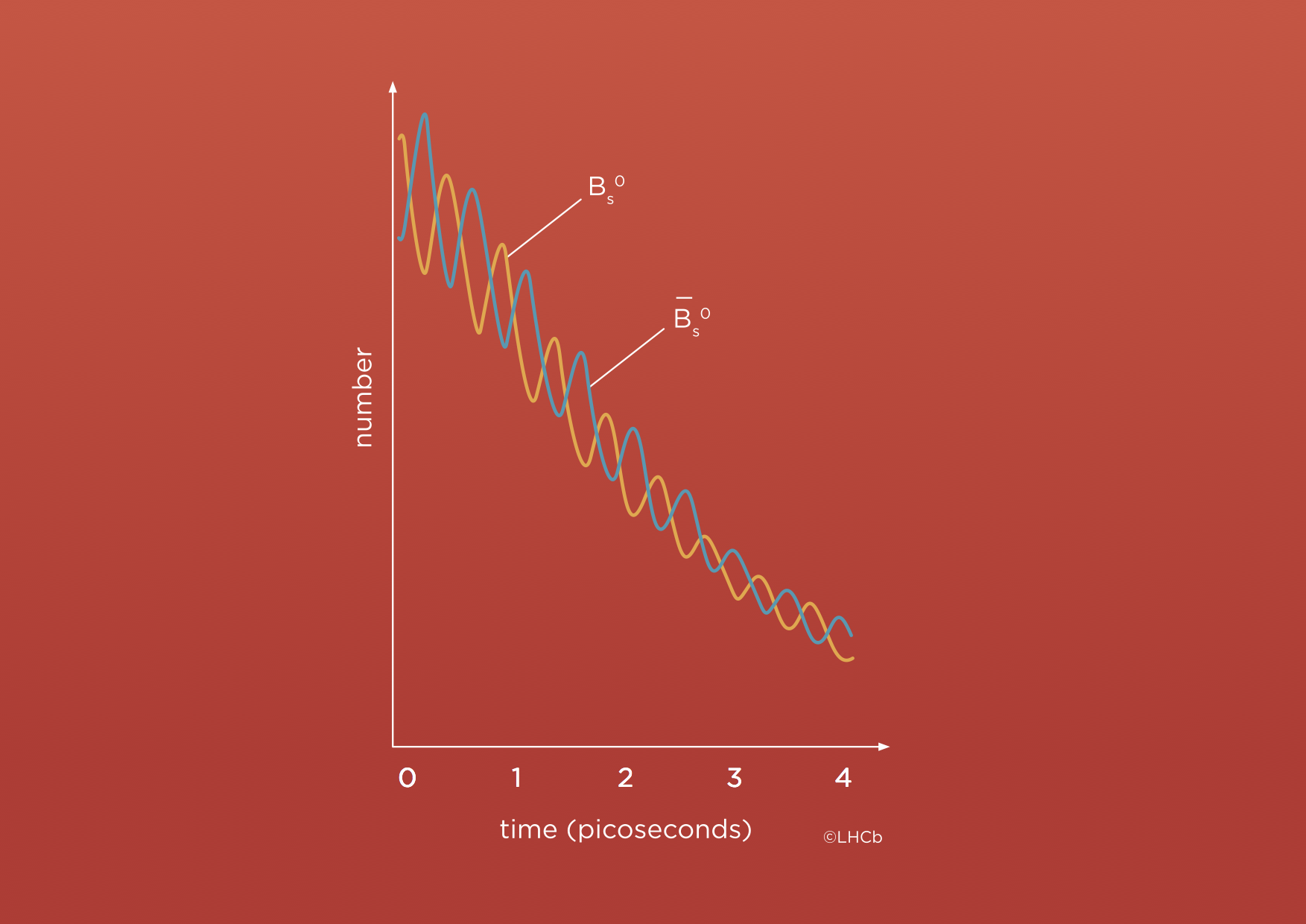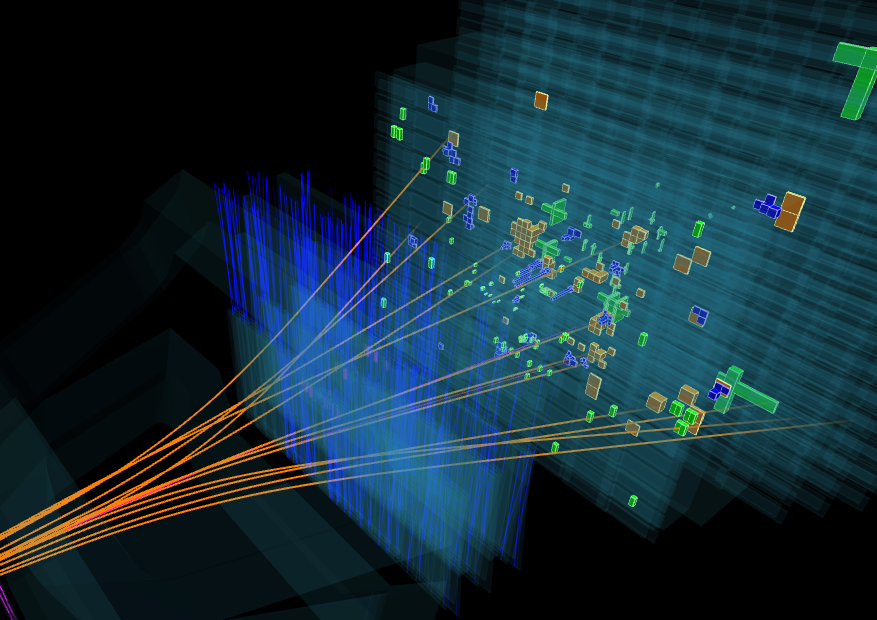The LHCb experiment sits at one of the four beam crossing points on the LHC ring. The LHCb experiment is studying the differences between matter and antimatter through the decay of particles containing beauty and charm quarks.

The particles produced from the proton- proton collisions travel through the LHCb detector. Each one of the LHCb experiments sub-detectors specialises in measuring a different characteristic of the particles. Collectively, the detector’s components gather information about the identity, trajectory, momentum and energy of the particles in the detector. Identifying precisely what particles we are studying is very important to pick out interesting events from the LHC collisions.
A B meson survives for a tiny fraction of a second (on average about 1.5 picoseconds or 0.000000000001 seconds) in the LHCb detector before it decays into lighter particles. The high energy of the LHC collisions means that the B mesons are produced with speeds approaching the speed of light and travel about a centimetre in the detector. The distance is even larger than you might naively expect due to Einstein's theory of special relativity -- which says that moving clocks tick more slowly.
The charge of the different particles is determined by how the particle's trajectory is altered as it travels through the experiments magnet. A particles momentum can be estimated by measuring the position of the particle before and after the magnet. The particles energy is measured by stopping the particle in the experiments
calorimeter.
The UK has responsibilities in two key sub-detectors, the vertex detector and the ring-imaging Cherenkov detectors.
The Vertex Locator (VELO) identifies the production and decay position of beauty and charm baryons and mesons.
The VELO uses silicon sensors, similar to those in your camera, to record the passing of the charged particles but takes “pictures” at a rate of forty million times per second.
Beauty and charm baryons and mesons live for a very short time, so to detect them the VELO has to be positioned very close to the LHC proton beams. The silicon sensors are very sensitive, so only when the beams are stable can the VELO be mechanically moved in - to within a few millimetres of the LHC beams.
The two ring-imaging Cherenkov (RICH) detectors distinguish between different particle types by measuring the light emitted by the particles as they travel through a very special kind of gas.
If particles travel through the gas at speeds faster than the speed of light (in the gas), they emit a coherent shockwave of light. The shockwave of light is much like a sonic boom of an aeroplane travelling faster than the speed of sound in air.
The light is focussed into a ring by a series of mirrors. The size of these rings depends on the speed of the particles and we can use this information, combined with other useful information in the other sub-detectors, to identify very accurately what the particle was.
The emitted light is seen by a system of sensors that are sensitive to individual photons of the light.






